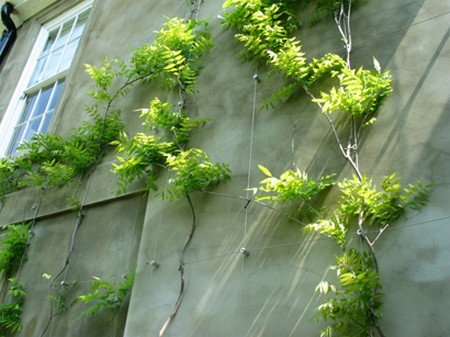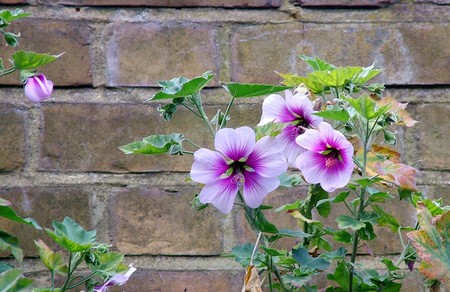PLANTING A HEDGE
Hedging plants over 25 cm (10 in) and under 60 cm (2 ft) in height transplant best, and should quickly form a mature hedge.
The easiest way to plant a hedge is to treat each hedging plant as a small shrub, taking out and preparing an individual planting hole for each. Peg out a straight line and insert canes as markers to indicate planting positions of a single row (a single row is adequate unless an exceptionally thick hedge is needed, when a double row can be considered). Hedging plants are normally set out at 45—60 cm (18—24 in) apart. But be guided by the recommendations on the label of the specific variety in question.

Plant the hedging and water to settle in. In exposed gardens which are inclined to be windswept, young hedging plants are going to need supporting. Either tie each plant individually to a cane pushed firmly into the ground alongside, or tie each to a taut wire running the length of the hedge and attached to posts at either end, and between as well if necessary to avoid sagging. The other alternative is to protect and shelter new hedging with wattle fencing or the like, until it is established.
PLANTING CLIMBERS AND WALL PLANTS
Don’t set any wall plant or climber closer to a wall than 30 cm (12 in). The risks are excessive dryness from the plant’s point of view, and possible damage to the foundations from the householders’. The same principles apply as when planting trees and shrubs: take out a hole sufficiently large to enable plenty of organic matter and planting mixture to be worked in beneath the plant, and then subsequently in and around the roots when backfilling. With smaller plants always make the hole a minimum of 30 cm (12 in) wider and 15 cm (6 in) deeper than the rootball.

Ensure adequate supports are in place before planting. Trellis of some sort is suitable for most climbers, and is essential for the likes of ivy, climbing hydrangeas and Virginia creeper, which climb by means of aerial roots and sucker pads. The danger with this type of climber is that unless grown up a trellis, they can, in time, damage the masonry. Old mortar is most at risk.
Fix the trellis onto 2.5 cm (1 in) thick blocks. These should be screwed into drilled and plugged walls. By securing the trellis 2.5 cm (1 in) out from the wall, aerial roots are kept away from the masonry and a good circulation of air is ensured, preventing moisture being trapped between climber and wall.